Driving in Iceland: Your Complete Car Rental Guide
Disclosure: The content on this page includes affiliate links. While clicking on these links won’t cost you anything extra, we may earn a modest commission from any purchases.
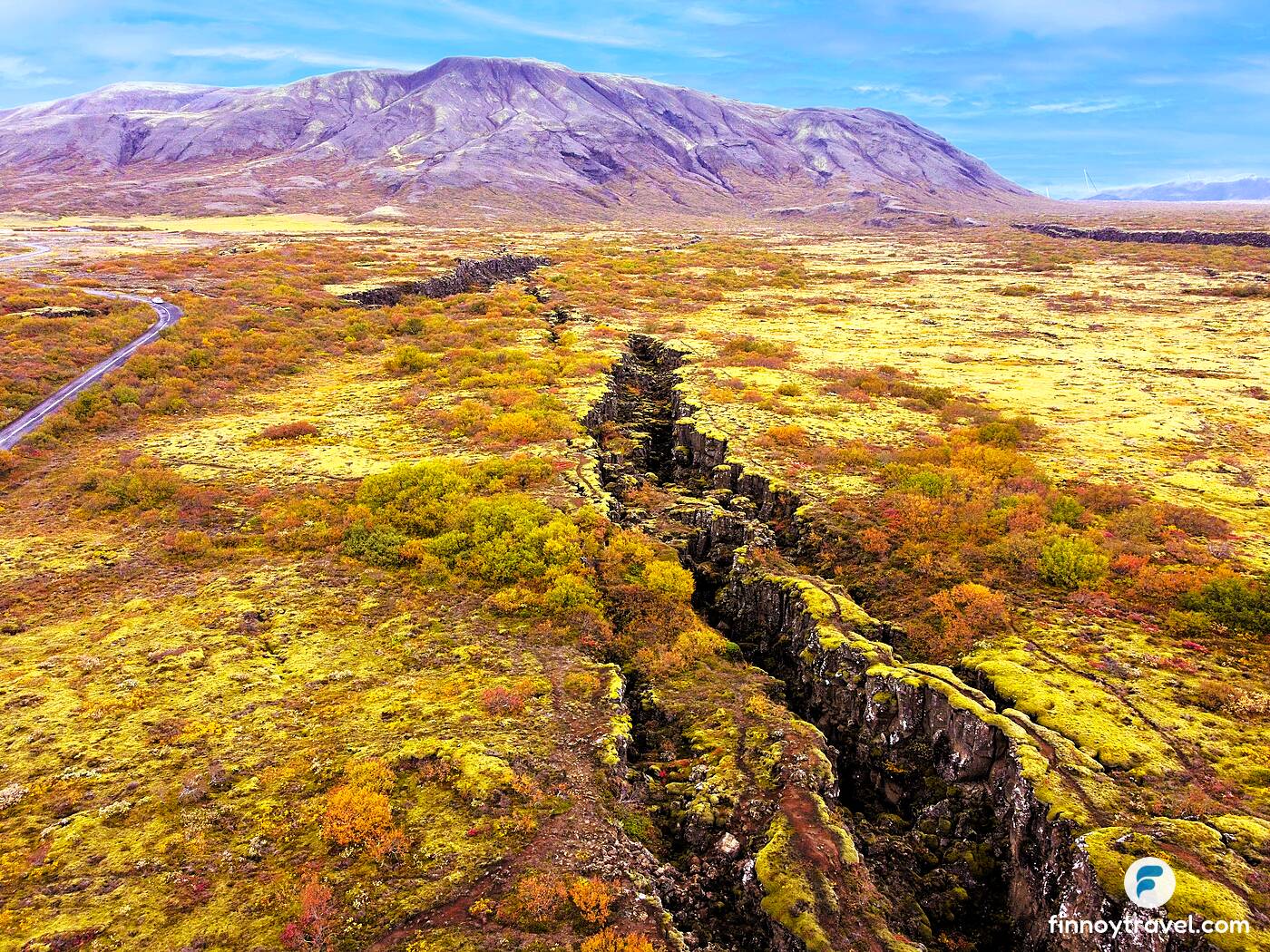
Driving in Iceland during a vacation is an incredible way to explore the country's breathtaking landscapes and natural wonders. With well-maintained roads and the freedom to go wherever you please, renting a car in Iceland is recommended. However, driving in Iceland differs from driving in most other countries in certain aspects. Read this article to discover the essential tips for making the most of your Icelandic adventure and creating unforgettable memories with a hired car. Learn also about our driving experiences in Iceland.
Covered in the Article
Drive Yourself in Iceland
Having made road trips abroad to different destinations, we can strongly say that a hire car is very practical and the best way to see and explore the hidden gems of your destination, like Iceland. Iceland is known for its wild landscape, geysers, waterfalls, and volcanoes. A hire car allows you to explore Iceland's stunning natural beauty at your own pace and schedule. Before flying back home, consider driving to Blue Lagoon by hire car, then heading to the airport.
In this article, we will share important tips that will help you to hire a car and drive in Iceland with confidence. These travel tips and guidelines are based on our driving experiences in Iceland and thorough research.
Why to Hire a Car in Iceland
One of the primary reasons to hire a car when travelling in Iceland is the freedom and the flexibility it provides. While public transportation in Iceland is available, it may not be as convenient or flexible as renting a car. Public transportation in Iceland, especially outside the main cities, has limited coverage. It may not reach remote areas or popular tourist attractions. Buses and other forms of public transport in Iceland operate on fixed schedules, which may not align with your preferred itinerary. Therefore, this can limit your ability to explore at your own pace.
A hire car provides a more comfortable means of transportation, allowing you to travel at your own pace and carry your belongings with ease. Also, moving around with a hire car allows you to access remote areas of Iceland that are not easily reachable by public transportation. This allows you to explore hidden gems and off-the-beaten-path locations. Moreover, renting a car in Iceland can be cost-effective, especially if travelling with a group. Splitting the rental and fuel costs among several people often works out cheaper than buying individual bus tickets.
Car Hire in Iceland
Before hiring a car in Iceland, familiarise yourself with the requirements and things you should know.
Minimum Age
To rent a car in Iceland, you must be at least 20 years old and have held a driving licence for at least 12 months. Note that the minimum legal driving age for certain specifics, such as SUVs with 4x4 capability, is higher. In Iceland, the legal driving age for renting these vehicles is 23 years. It is important to note that many roads in Iceland require a car with car4x4 4WD. Therefore, it is advisable to check if you should be renting an SUV or motorhome with a 4x4.
It is good to be aware that an extra fee will be applicable if you are under 25 years old and the driver of the hire car. This fee applies to the rental of any vehicle type in Iceland, including cars, SUVs, motorhomes, and campervans.
Driving Licence
Possessing an international driver's licence is unnecessary, but you must have a valid driver's licence from your home country with full driving privileges. It is important to note that a driving permit or provisional driving licence will not be sufficient. Foreign driving licences are accepted when renting a car in Iceland only if they are in English or some other Roman alphabet, such as French, German, Italian, Polish or Spanish. Conversely, driver's licences that use non-Roman alphabets, like Arabic, Japanese, or Korean, are not recognised in Iceland. This is because the local authorities and rental agencies are unfamiliar with non-Roman characters, making it difficult for them to verify or understand the licence's details.
If you have a driver's licence written in a different alphabet than English or Roman letters, you need an IDP. Remember that the international licence must be presented alongside your original domestic driving licence.
Credit Card
If you are hiring a car in Iceland, you must also have a valid credit card so the hire car company can charge any damages to the vehicle. Companies may pre-authorise a deposit, too. Mastercard and Visa credit cards are the most commonly accepted, but many car rental companies may use other cards, such as Amex
Car Type
During our trip to Iceland, we survived with a small hire car, Toyota Aygo. A small car was sufficient since we already knew we would be visiting the attractions in the south on this trip. However, the car indeed gave us a few limitations, like not being able to drive on the challenging F roads.
When hiring a car in Iceland, it is recommended to consider renting a 4x4 vehicle, especially if you plan to visit places like Þjórsárdalur Valley and its attractions such as Háifoss Waterfall. Although visiting without a 4x4 vehicle is technically possible, having one will provide better accessibility and safety, especially when encountering rough terrain or river crossings. Renting a 4x4 will also allow you to explore other off-road destinations in Iceland, such as the highlands, where a regular car may not be suitable.
Driving off the road is strictly forbidden in Iceland and punishable.
Insurance
Never travel or drive without reliable travel medical insurance because unexpected healthcare costs may become expensive.
It is also wise to be well-informed on the hire car's insurance terms and conditions. Commonly, there is an excess part that you are responsible for paying yourself in the case of damage. We recommend buying full-covering insurance together with the hire car. Reliable hire car comparison sites, like Discover Cars offers insurance at a significantly lower cost than car hire companies.
Costs
Iceland is known to be an expensive country, which we proved to ourselves. Now, you might be concerned that car rental prices can be high. Unfortunately, they are. However, you can find good deals by comparing prices and booking in advance. You should also be aware of additional expenses such as insurance and fuel costs. When we travelled in Iceland, we paid for all our transactions during the trip using Curve Card, which offered good currency conversion rates without transaction fees on weekdays.
Renting a car with full insurance may cost a few more euros, but it will give you peace of mind.
Driving Regulations in Iceland
When driving in Iceland, it's crucial to familiarise yourself with the driving regulations to ensure your safety and avoid any potential fines. Here are some key rules you should know.
Driving on the Right Side
In Iceland, you drive on the right side of the road and overtake on the left. Icelandic roads are often narrow, so you should not stop on the road to take photographs. Instead, look for the nearest safe exit where you can safely pull off. Stopping on the road when it is not a safe zone may lead to a fatal traffic accident.
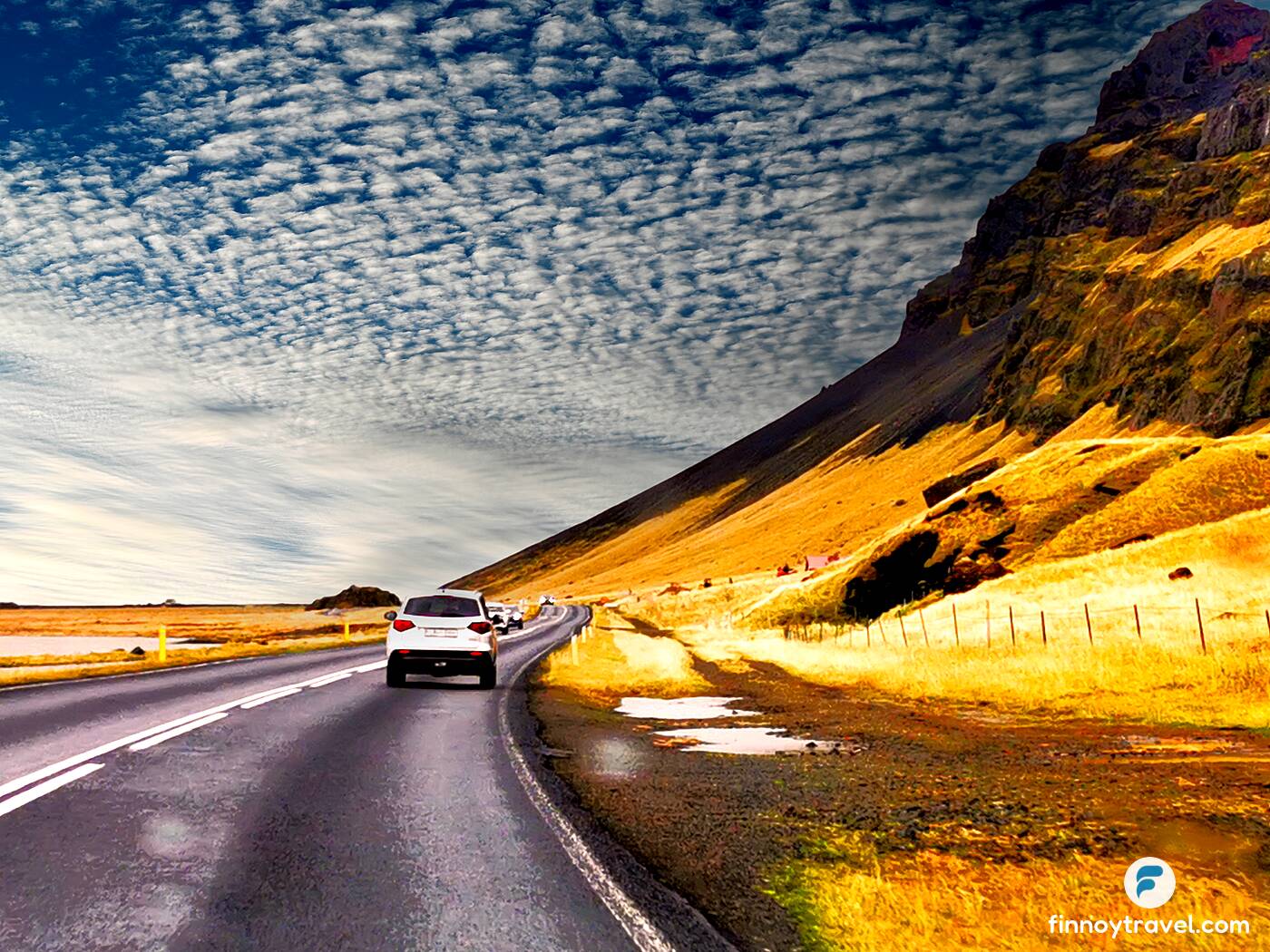
Speed Limits and Seatbelt Requirements
The general speed limit is 30-50 km/h in populated areas, 80 km/h on gravel roads in rural areas, and 90 km/h on paved/tarred roads. The amount of a speeding fine in Iceland can vary depending on several factors, including your driving speed and the designated speed limits. Typically, fines range from $195 to $460. However, if you exceed the legal speed limit by a significant margin, such as driving more than 40 km/h over the limit in 80-90 km/h zones, the fine can increase to $615-$690.
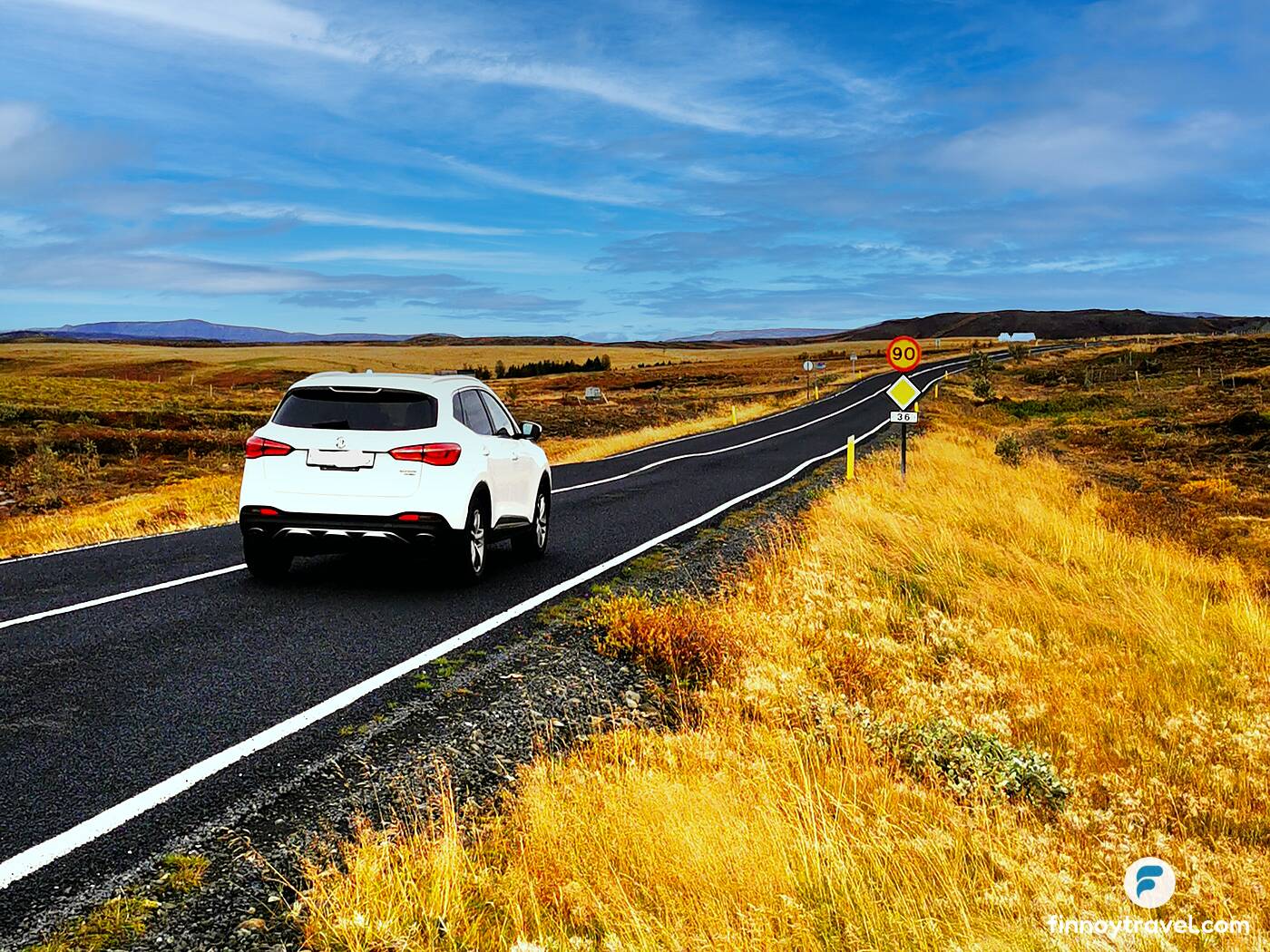
Drivers and passengers must wear seatbelts. Infants and younger children must be seated in car safety seats appropriate for their age, height, and weight.
Speeding tickets from traffic cameras will be sent to your rental company, adding an administration fee and sending the bill to the driver.
Headlights
It is mandatory in Iceland to use headlights all year round while driving around the clock. Therefore, remember to turn the lights on when you enter the driver's seat. Using the automatic front LED daytime running lights is insufficient for driving in Iceland.
Always drive in Iceland with the headlights on, including daytime!
Roundabouts and Cyclist Safety
In Iceland, traffic on the inner lane of a two-lane roundabout always has priority over traffic on the outer lane. It's important to be aware, especially in Reykjavík, where two-lane roundabouts are common. When encountering cyclists, maintain a minimum distance of 1.5 meters between your vehicle and the cyclist.
We needed to be extra careful while driving in roundabouts in Iceland because driving rules in Finland are different.
Mobile Phone Use
Using mobile phones while driving is strictly prohibited in Iceland. It's important to stay focused on the road and avoid any distractions. Don't even think about taking photographs while driving, even when the scenery is tempting.
Drink Driving
In Iceland, drinking and driving is strictly prohibited. The legal threshold for breath alcohol concentration is 25 mg/l. If caught driving under the influence of alcohol, offenders may face fines, licence suspension, or even imprisonment. The specific penalties can range from fines of thousands of Icelandic krona to possible imprisonment for repeat offenders or those involved in serious accidents. It is important to note that the law in Iceland takes drunk driving very seriously, and it is strongly advised never to drink and drive to ensure both personal safety and legal compliance.
The legal BAC (Blood Alcohol Content) in Iceland is 0.02%, which is much lower than in the UK or US, where it is 0.08%.
Parking
Many parking areas in Iceland use a pay-and-display system. You need to purchase a parking ticket from a designated machine and display it visibly in your vehicle. The ticket will indicate the duration of your parking and the corresponding fee.

Parking areas in Icelandic cities and towns are divided into different zones, each with its own regulations and pricing. Please familiarise yourself with the parking zones and their rules to avoid fines or towing.
In some areas, parking may be free on Sundays or in designated free parking zones. If you are outside the designated parking zones and do not see any parking signs, you may be in a free parking area.
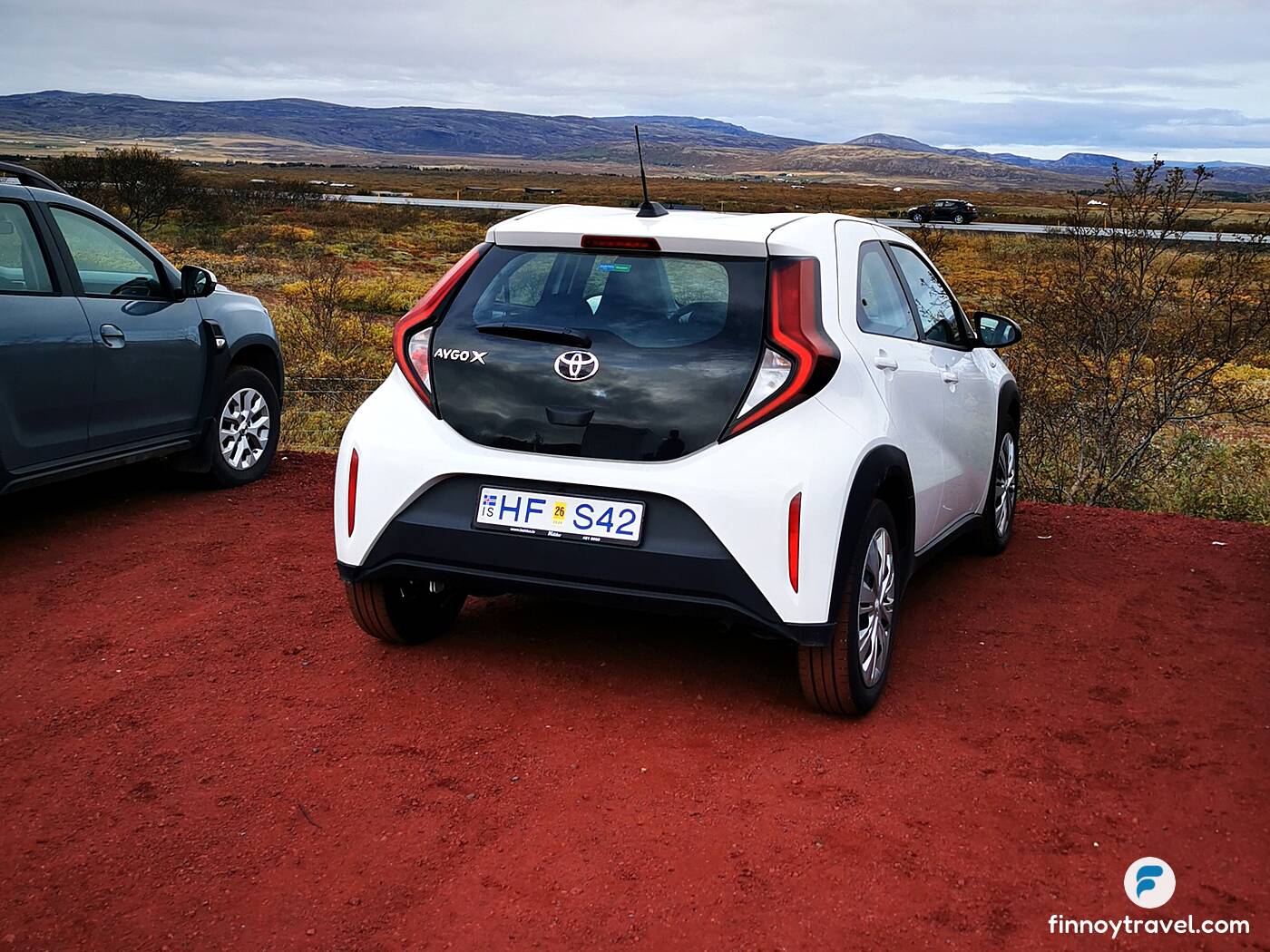
Download Parka and Easypark apps, which you can use to pay for parking at Reykjavík, Akureyri and many tourist destinations.
Toll
There is only one toll in Iceland, and that is the Vaðlaheiðargöng tunnel by Akureyri. You can pay for a single trip up to 24 hours before and 24 hours after driving through the tunnel. However, the 10-minute detour around the tunnel is beautiful in fair weather.
Tips for Safe Driving in Iceland
Iceland has a unique traffic culture with specific rules and considerations. To ensure a safe and enjoyable driving experience in Iceland, it's important to follow these essential safety tips.
Know the Driving Conditions
Road conditions in Iceland can be challenging, especially in rural areas. Be cautious and drive carefully, as roads can be icy, narrow, and winding. It is pretty standard for accidents in Iceland to occur when the road transitions from tarmac to gravel. To ensure safety, it is essential to decrease your speed when approaching a gravel road and be cautious of oncoming vehicles. This will help minimise the risk of stones hindering screens and prevent skidding.
Winds are strong in Iceland, and you should not drive if the wind is too gusty.
When driving in Iceland, be prepared for varying conditions on mountain roads, even on the paved Ring Road. You may encounter single-lane bridges, tunnels, and roads. Remember that the general rule is that the first vehicle to arrive has the right-of-way. Therefore, it's important to slow down, assess the situation, and exercise caution. These three things are also essential to remember when approaching blind rises and corners , as lanes may not always be separated.

Ring Road is fully paved. The F Roads are mountain roads (generally gravel) that are inaccessible in winter. They begin to close in September, and some can reopen as late as July. It's good to understand that not all gravel roads are F roads.
A 4x4 vehicle is required to drive on the F roads or another rental company-approved car.
Avoid Scenic Distractions
The beautiful landscape in Iceland and the animal life along the way can be a distraction while driving. It is important to stay focused on the road and not get too absorbed in the scenery to ensure safe driving. Pulling over on the side of the main road is strictly forbidden. Keep your attention on the road while driving at all times to minimise the risks of accidents. Be vigilant, slow down if you encounter animals on the road and give them plenty of space to avoid collisions.
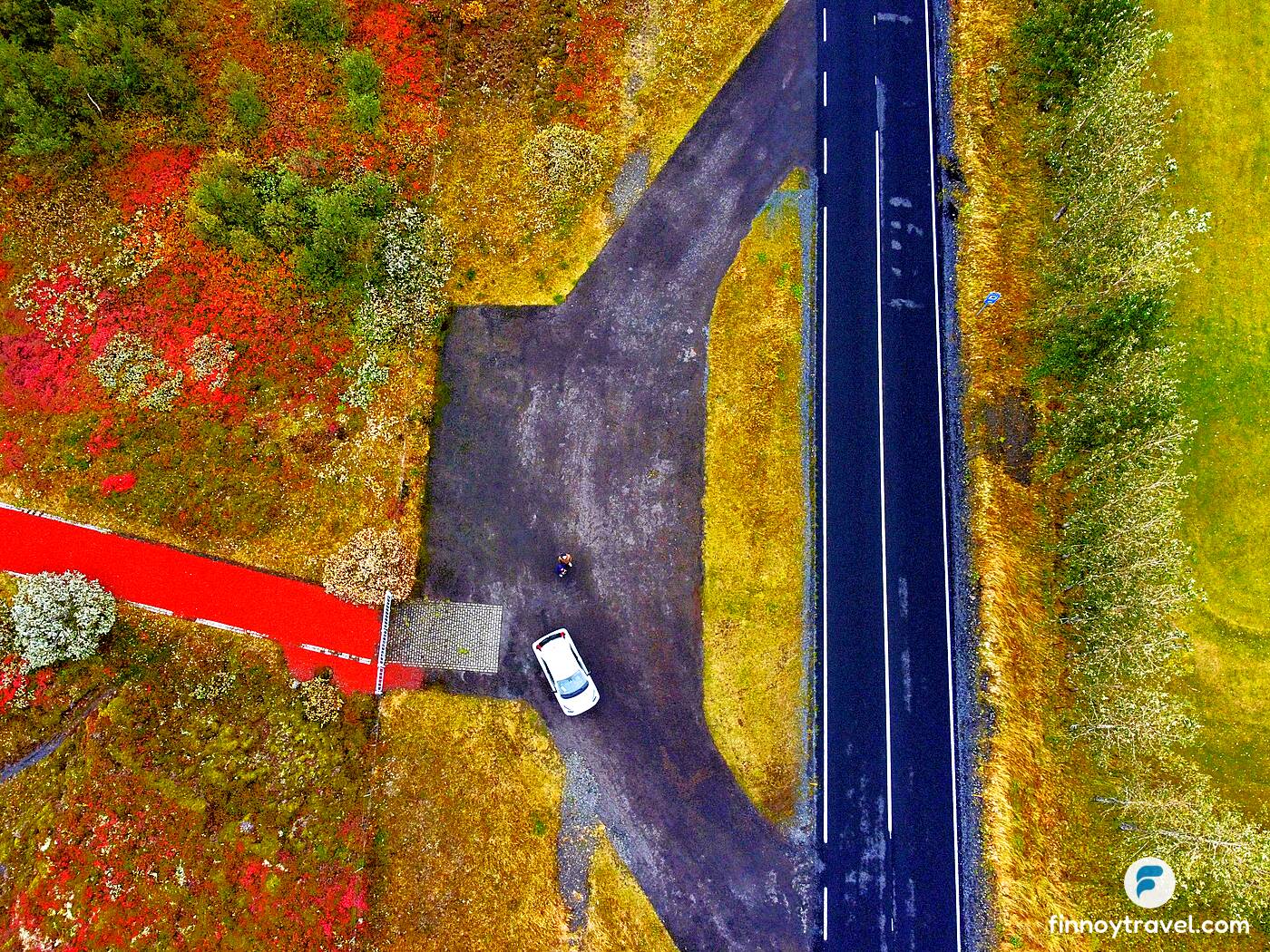
Prepare for Changing Weather Conditions
Icelandic weather can be unpredictable, with rapid changes in conditions. Stay updated on weather forecasts and road conditions, and adjust your driving accordingly. Check Safetravel.is and Road.is for the latest road conditions and closures before driving in Iceland. To ensure safety, slow down and drive cautiously in adverse weather conditions.
Stay Alert
Long drives in Iceland's vast landscapes can be tiring. Take regular breaks, get enough rest, and avoid driving if you feel fatigued or drowsy. Sharing driving responsibilities with other passengers is a good idea if possible.
Know the Highland Driving Rules
Driving in the highlands often involves crossing rivers with a 4x4 vehicle. It's important to note that insurance does not usually compensate for any damage incurred during river crossings. Therefore, the responsibility for any potential risks or damages lies solely with the driver.
Refuel on Time
A good rule is not to let your tank drop below half before filling back up again. During our road trip to Iceland, we always made sure to refuel on time, so we had no problem with fuel running out in no time. In some areas of Iceland, gas stations can be a little farther apart.
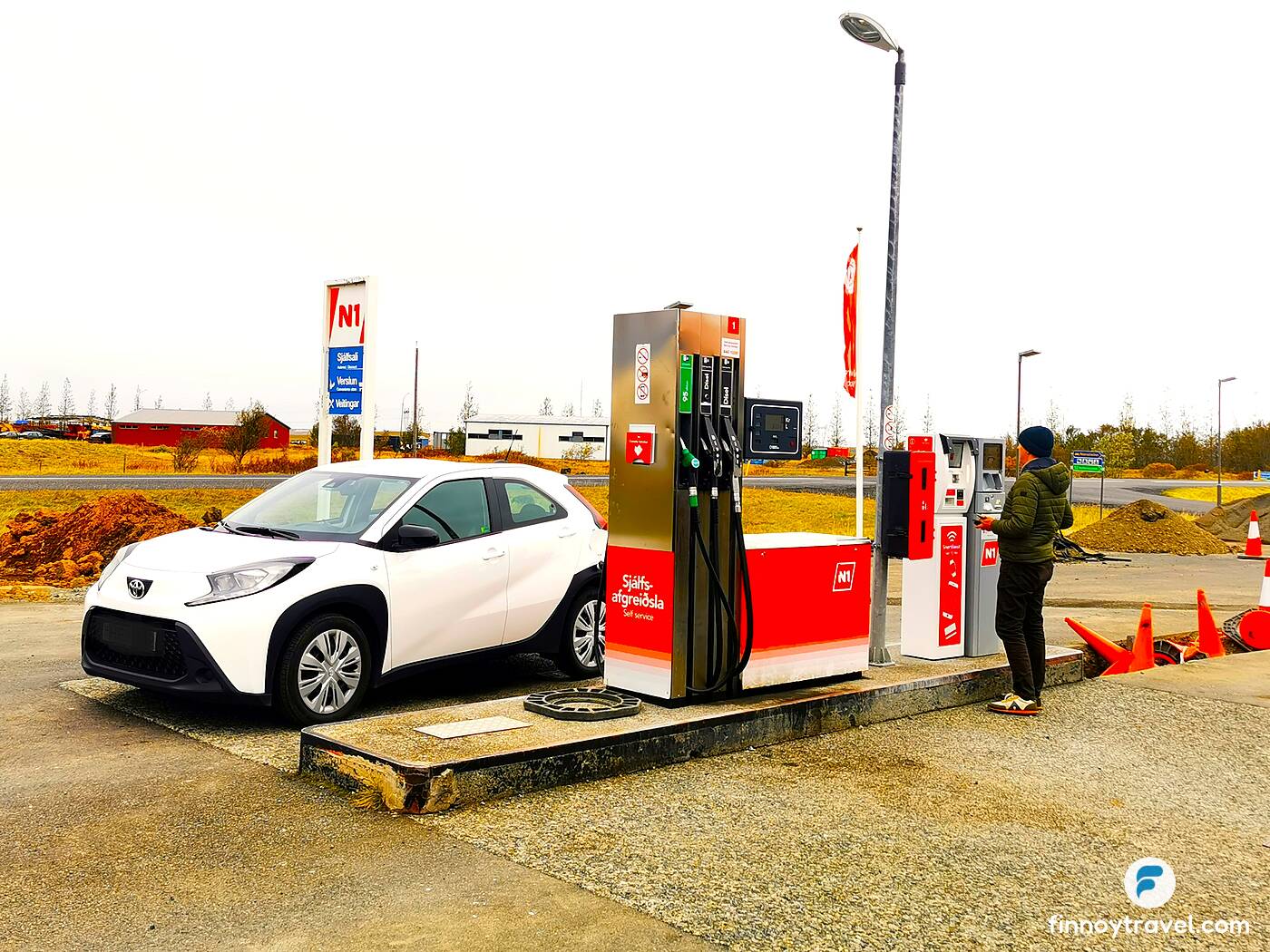
Fuel is more expensive in Iceland than in many other countries, but driving yourself is still cheaper than attending tours.
Know the Emergency Service 112
Familiarise yourself with the emergency services in Iceland and the 112 helpline. Contact the appropriate authorities for assistance in an accident, breakdown, or other emergencies.
Car Rental Companies in Iceland
There are several car rental companies in Iceland. A few months before our trip to Iceland, we started comparing different car hire options using Discover Cars. From there, we found the best offer from Europcar whose pickup location was right at Keflavik Airport (KEF).
Our best advice when choosing a hire car company is to ignore the ones which have previous bad reviews. On Discover Cars, you will find global car hire companies and local ones. The most important thing to confirm is the company's reputation by reviewing previous customer reviews. To minimise having trouble during your trip, avoid renting cars from a company with a low rating. Instead, be prepared to pay a little more to get better service and thus avoid headaches later.
The Best Season to Drive in Iceland?
If you wish to see snow or have the possibility of seeing northern lights, the winter months are a good time to go to Iceland. Keep in mind, though, that in the winter months, there is shorter daylight.
On the other hand, if you want to enjoy the lush green landscapes, longer daytime, and midnight sun or watch whales and puffins, then you should consider booking a trip between June and August.
Our Driving Experience in Iceland
We spent 5 days in Southern Iceland in September, staying specifically at Hveragerði. Considering the location, we mainly visited the attractions located in the south, which we reached by driving the hire car we rented from Europcar.
By using our hire car, Toyota Aygo, we managed to navigate and see some of the most popular tourist destinations of Southern Iceland.
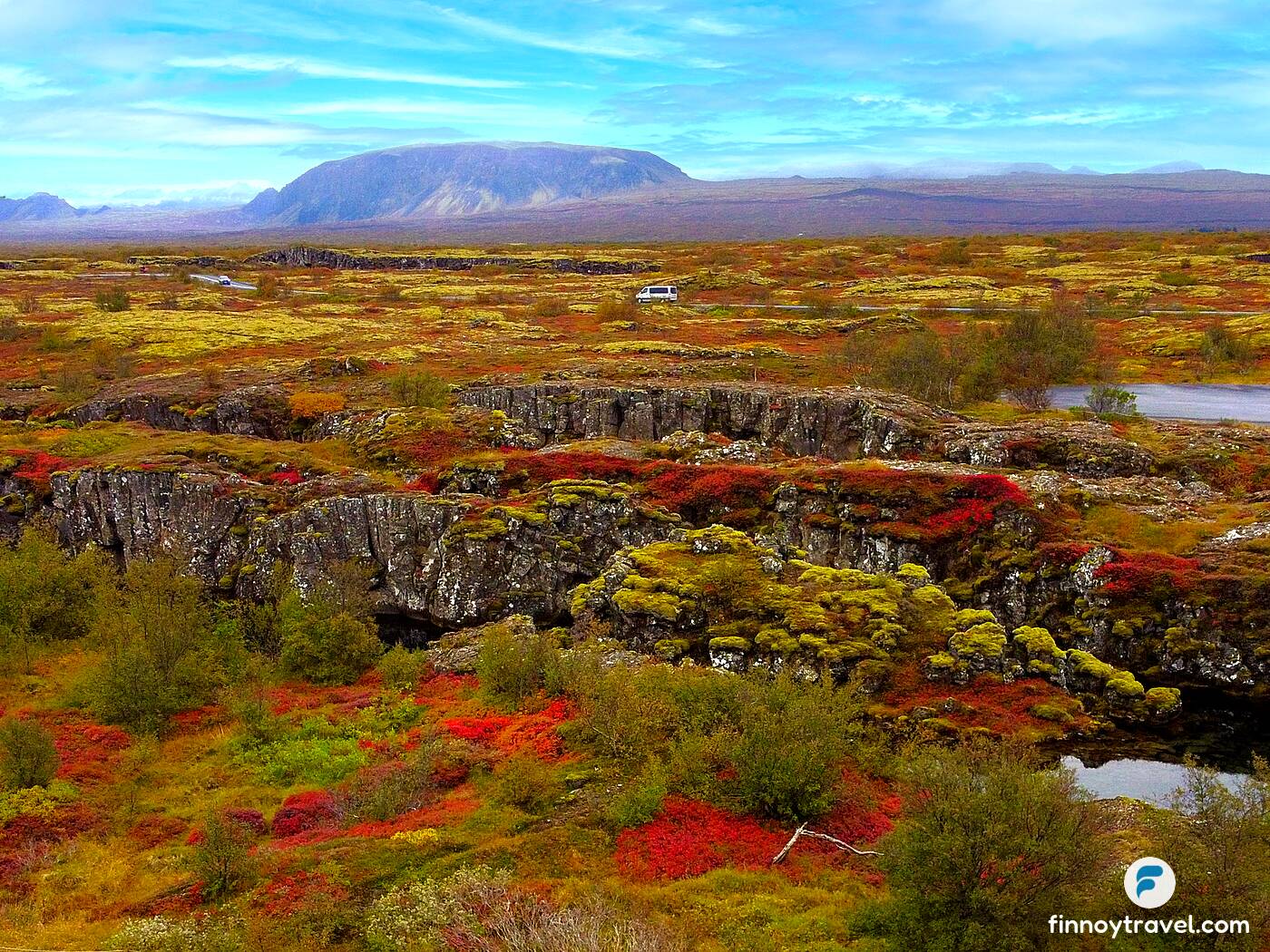
Thingvellir National Park
Thingvellir National Park was our first stop on our vacation. It was a perfect warm-up for the week of countless nature spots and hiking! This is an easy park to hike, featuring many open, vast natural landscapes.
We enjoyed the small waterfall and the rock wall you can walk down into. The park was bustling, but the trails were wide open for big crowds. Thingvellir National Park is a UNESCO World Heritage site and is home to the world's first democratically elected parliament, Alþingi, which was established in 930 AD.
Thingvellir National Park is a must-visit destination known for its geological processes, historical significance, and natural beauty. As part of the Golden Circle tour, it offers a range of activities for visitors. The park showcases the unique geography of Iceland, including the exposed North American and Eurasian tectonic plates. There are picnic places and clean toilets at this park.
You can tour the place for free, which will take 1 to 3 hours. You can either park at the visitor centre or below by the water. The plane is very accessible, with most paths also being wheelchair accessible.
Þjórsárdalur Valley
Þjórsárdalur Valley, located in the Southern Highlands of Iceland, is a stunning destination known for its natural beauty and rich cultural heritage. The valley boasts several attractions, including the impressive Háifoss waterfall, one of the tallest in Iceland, and the picturesque Hjalparfoss waterfall. Visitors can also explore hot springs, a vast forest, and the renowned Kerið crater.
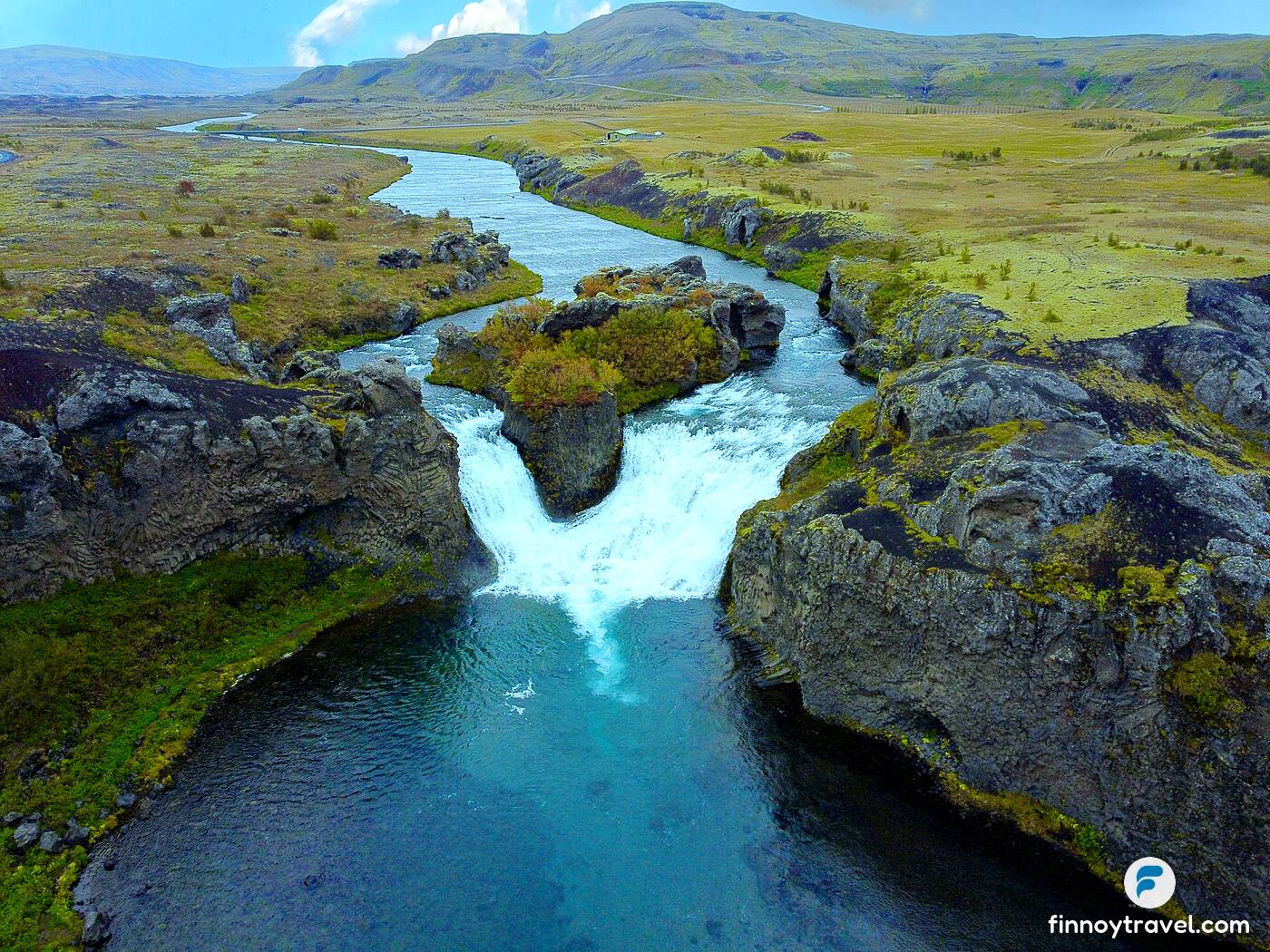
Kerid Crater or Kerið Crater
Another nice stop on the Golden Circle route is Kerið Crater or Kerid Crater. It is classified as a volcanic crater lake. Unlike most volcanic craters, Kerid has a relatively intact cone shape, with steep walls and a caldera-like basin. This makes it a remarkable sight for visitors.
The parking is free, but there is an entrance fee. We explored the crater's rim by following a well-maintained walking path, which offers breathtaking views of the lake and the surrounding landscape. We recommend walking around the crater and then going down to the lake by the steps. If you do so, you will need about an hour. The crater is beautiful and worth the visit!
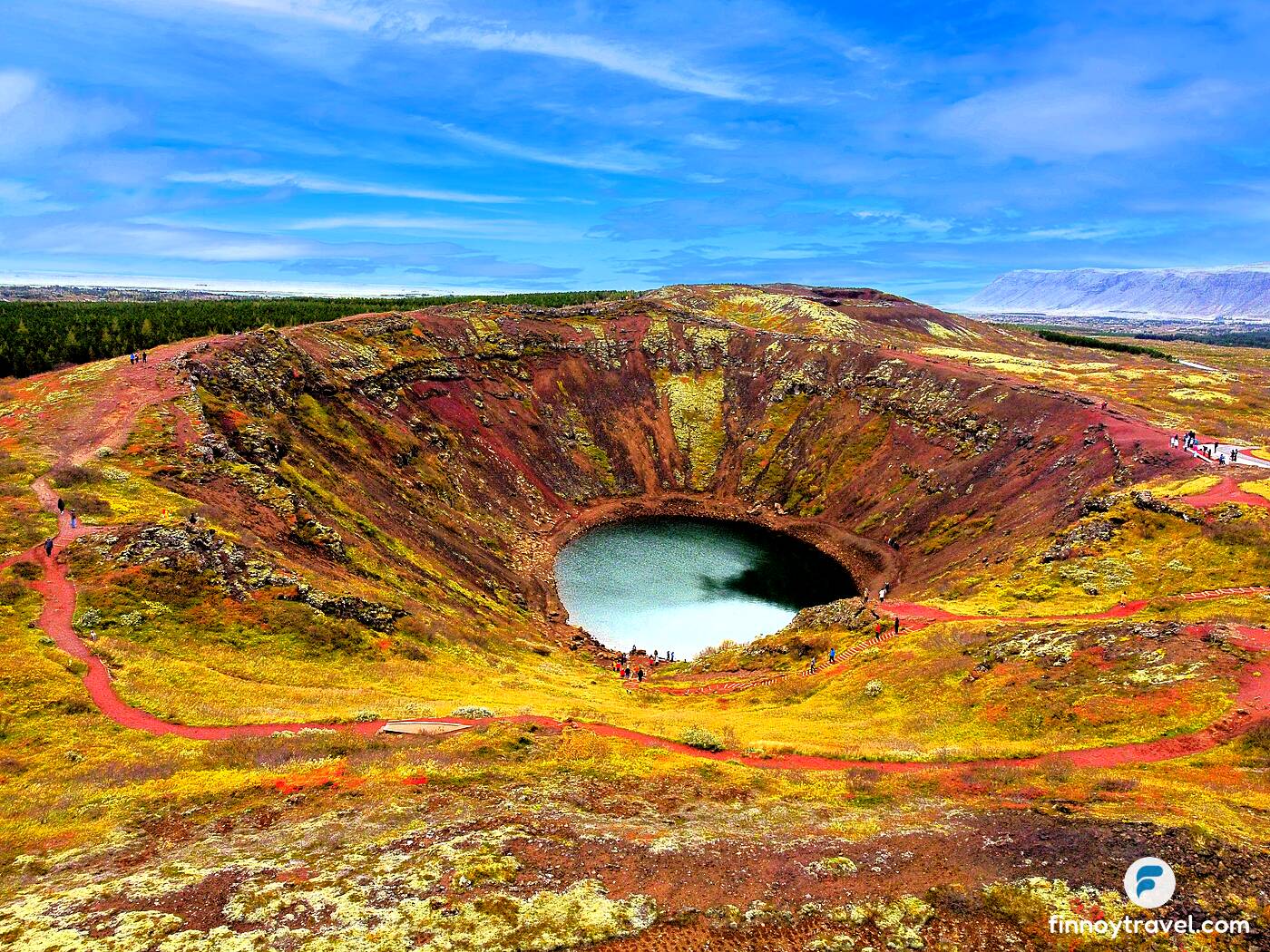
Geysir
Our visit to Geysir offered a unique opportunity to witness the raw power and beauty of nature in action. The setting of this site is also unique. Having green moss-covered mountains in the background adds to its beauty and makes it quite a photogenic place.
Visitors can walk around the Geysir area. We recommend doing the hike above, from which you will have a wonderful view of the Geysir area. We also noticed people eating their packed lunch on site, which is a brilliant idea. Who doesn't want to enjoy a meal in a lovely setting? One of the pools is blue due to the sulfur content.
The site is free to visit and has ample parking. There is a nice cafe and restaurant nearby.

Gullfoss Waterfall
Gullfoss is a stunning waterfall in Iceland that the Hvítá River created. It is a popular tourist destination and is located in the southwest part of the country. The waterfall is unique because it has a two-tiered drop, with the water falling at a 90-degree angle into a crevice. The site is also known for its geological features, as it is situated on top of a rift valley and is surrounded by geysers and hot springs.
Gullfoss is a must-see for anyone visiting Iceland and is a testament to the power and beauty of nature. There is a wide parking area on site, which is free. A large, complex complex of souvenir shops and restaurants is on-site. It is a perfect place to get warmth after being outside in cold, rainy weather.
Seljalandfoss Waterfall
Seljalandfoss Waterfall is another of Iceland's most stunning and unique waterfalls. It is known for its impressive height of 60 meters (200 feet) and the unique opportunity it offers visitors to encircle the waterfall fully. We walked behind the cascading waters and experienced the breathtaking beauty up close with other impressed tourists. The waterfall is part of the river Seljalandsá and is surrounded by beautiful cliffs and rock formations. There is no entrance fee, but you must pay a parking fee of 900 ISK. A cute souvenir shop and kiosks were selling food and drinks on site. The parking area may have been full, as we experienced when we were there; luckily, a traffic officer guided all drivers, ensuring a smooth traffic flow without any chaos.

Gljúfrabúi Waterfall
Gljúfrabúi Waterfall is another hidden gem near the Seljalandfoss Waterfall. It can be easily overlooked, but it is worth a visit. We were delighted to see this nearly hidden waterfall in a narrow canyon that cascades into a pool. Waterproof clothing and boots are recommended, as you will get wet and stand in a small stream. It can get busy with tourists wanting to take photos inside the cave.

Reykjavik Sightseeing
Surely, we wanted to explore also Iceland's capital, Reykjavik. We drove there on Sunday afternoon, expecting calmer traffic than usual, and we were right. We parked near the famous Hallgrimskirkja Church and were delighted that it was free. Before dinner, we strolled the famous Rainbow Street and visited the Hallgrimskirkja Church, the Icelandic Phallological Museum, and the Harpan Building. All these were possible at our pace because we drove ourselves.
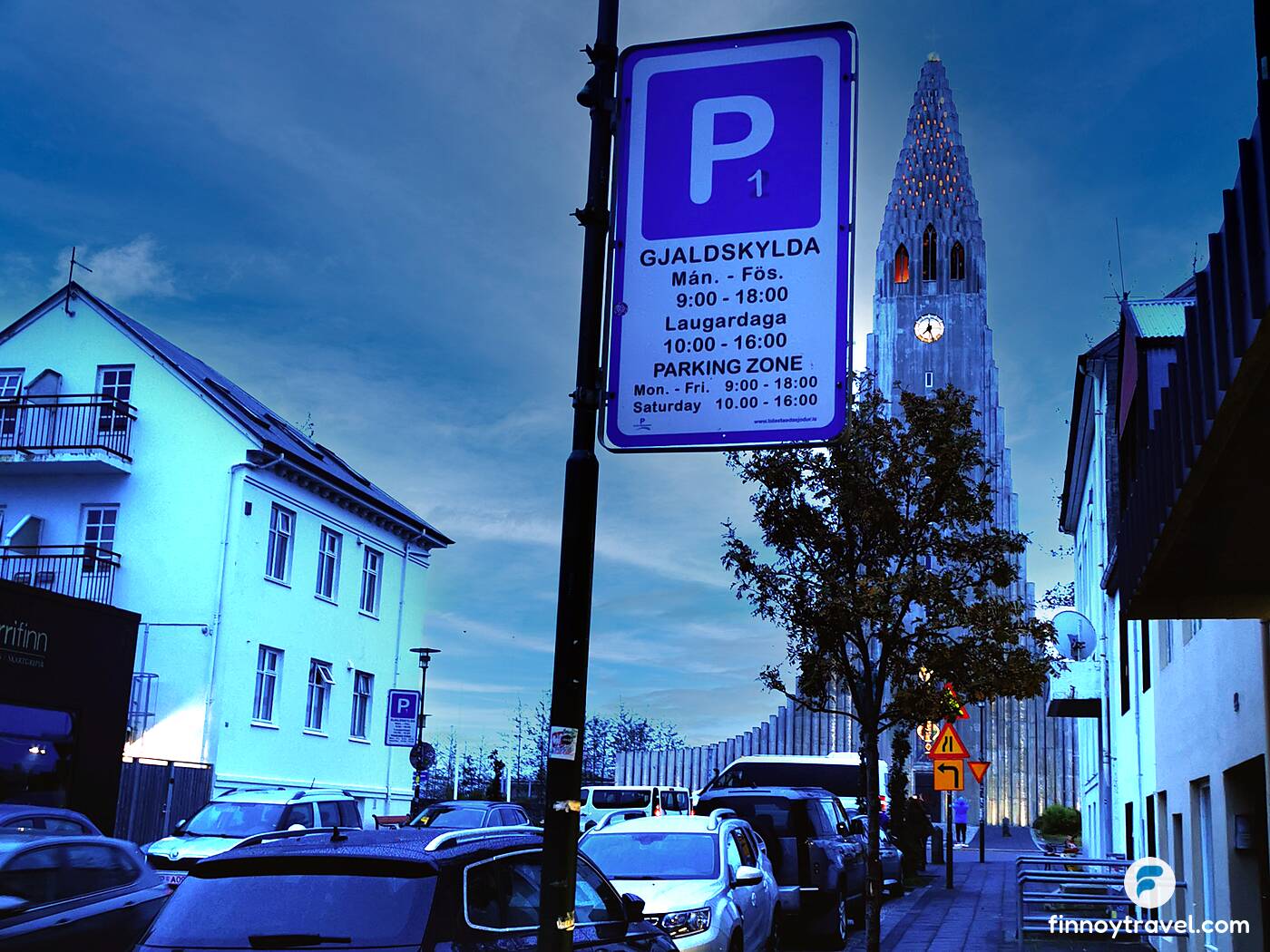
As seen in the image above, Reykjavik's parking zones are marked with "P" parking signs, followed by a number ranging from 1 to 4, indicating the corresponding hourly parking rates. Payment is required in zones P1, P2, and P3 on weekdays from 09:00 to 18:00 and on Saturdays from 10:00 to 16:00. However, parking in these zones is free outside these designated hours. We drove to Reykjavik City Centre on a Sunday evening, so we didn't have to pay any parking fee.
In Iceland, you should not park against the flow of traffic. All vehicles must be parked in the same direction as the traffic flow. If you park incorrectly, you risk getting fined.
Blue Lagoon
Surely we didn't want to miss visiting one of Iceland's famous attractions, the Blue Lagoon, our last stop. So we had already planned to leave the hotel 5 hours before our flight to Helsinki. We had a pleasant drive to Blue Lagoon with our hire car, taking in scenic landscapes along the way. We recommend considering a visit to Blue Lagoon as your last stop if you have sufficient time before departure. You'll need at least 2 hours to spend at this spa.
Finally, we headed to the airport, where we returned the hire car to the drop-off point of Europcar. One of their staff checked the car, and everything was fine. Throughout our vacation in Iceland, we had no problems with the hire car and fortunately encountered no incidents. We fly out packed with great memories and want to come back to explore more of Iceland.
Common Questions
- Can a foreigner or tourist drive in Iceland?
- Yes, it is possible. A UK, EU, or US driving licence is a sufficient driver's licence in English or Roman letters. You need an International Driving Licence (IDP) for other foreign licences.
- Do you drive on the right or left side of the road in Iceland?
- In Iceland, you drive on the right side of the road.
- What are the default speed limits in Iceland?
- In urban areas, you can drive up to 50 km/h. In rural areas, the speed limit is 80 km/h on unpaved/gravel roads and 90 km/h on paved/tarred roads.
- What are F roads?
- The F roads are challenging mountain roads that can be accessed only with a 4x4 vehicle.
- Are there speed cameras in Iceland?
- Yes, there are, but not many of them. Still, you must avoid speeding because the fines can be huge.
- Is driving difficult in Iceland for first-timers?
- Driving conditions in Iceland can be challenging, particularly in winter or rural areas. The roads can be narrow, winding, and have limited visibility. Additionally, the weather conditions in Iceland are known for their rapid changes, including rain, snow, fog, and high winds. It is crucial to always check the weather and road conditions before embarking on a journey to ensure safety and preparedness.
- Are the traffic signs in Iceland in English?
- The traffic signs in Iceland are similar to those in other countries, and some have English transcriptions.
- Should I drive myself or attend tours in Iceland?
- Driving yourself is cheaper and faster than taking a taxi or public transportation to attractions. If you prefer tours, buy them on GetYourGuide.
- Can I drink and drive in Iceland?
- Absolutely no! Driving under the influence of alcohol is illegal in Iceland.
- Where to hire a car in Iceland?
- We recommend comparing hire car prices on Discover Cars to get the best rate.
Bottom Line
For several reasons,Iceland is best explored with a hire car. Renting a car in Iceland can be cost-effective, especially if you're travelling with a group. It allows you to save money and time compared to taking tours.
Secondly, a hire car gives you the freedom and flexibility to visit all the desired destinations at your own pace. You can broaden your travel scope and explore places according to your preferences. Additionally, driving in Iceland offers the opportunity for scenic road trips to beautiful locations, allowing you to immerse yourself in the country's stunning landscapes fully.
Lastly, having a car enables you to access remote areas that are not easily accessible by public transportation or tours. This means you can discover hidden gems off the beaten path and have a more personalised experience of Iceland.
Making the right choice regarding renting a car and securing insurance with good coverage is crucial. Don't rush this process; take your time to thoroughly compare different options to ensure you make the right choice. It's essential to carefully read and understand the rental terms, knowing your responsibilities inside out. Remember to only opt for companies with a well-established reputation. This will give you peace of mind throughout your journey. Equally important is acquiring reliable travel medical insurance that offers comprehensive coverage in case of any unforeseen incidents abroad.
By following these valuable tips and taking the necessary precautions, your car rental and driving experience in Iceland will be as smooth and hassle-free as we had. If hiring a car is not feasible, you can always book reliable tours from GetYourGuide.
Have you driven in Iceland? Comment your best driving tips below. Don't forget to share these tips with your travelling friends or family.





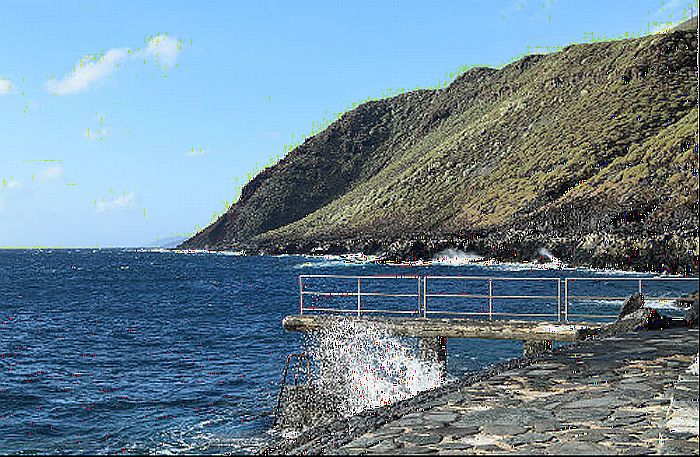
Add Comment
Comments